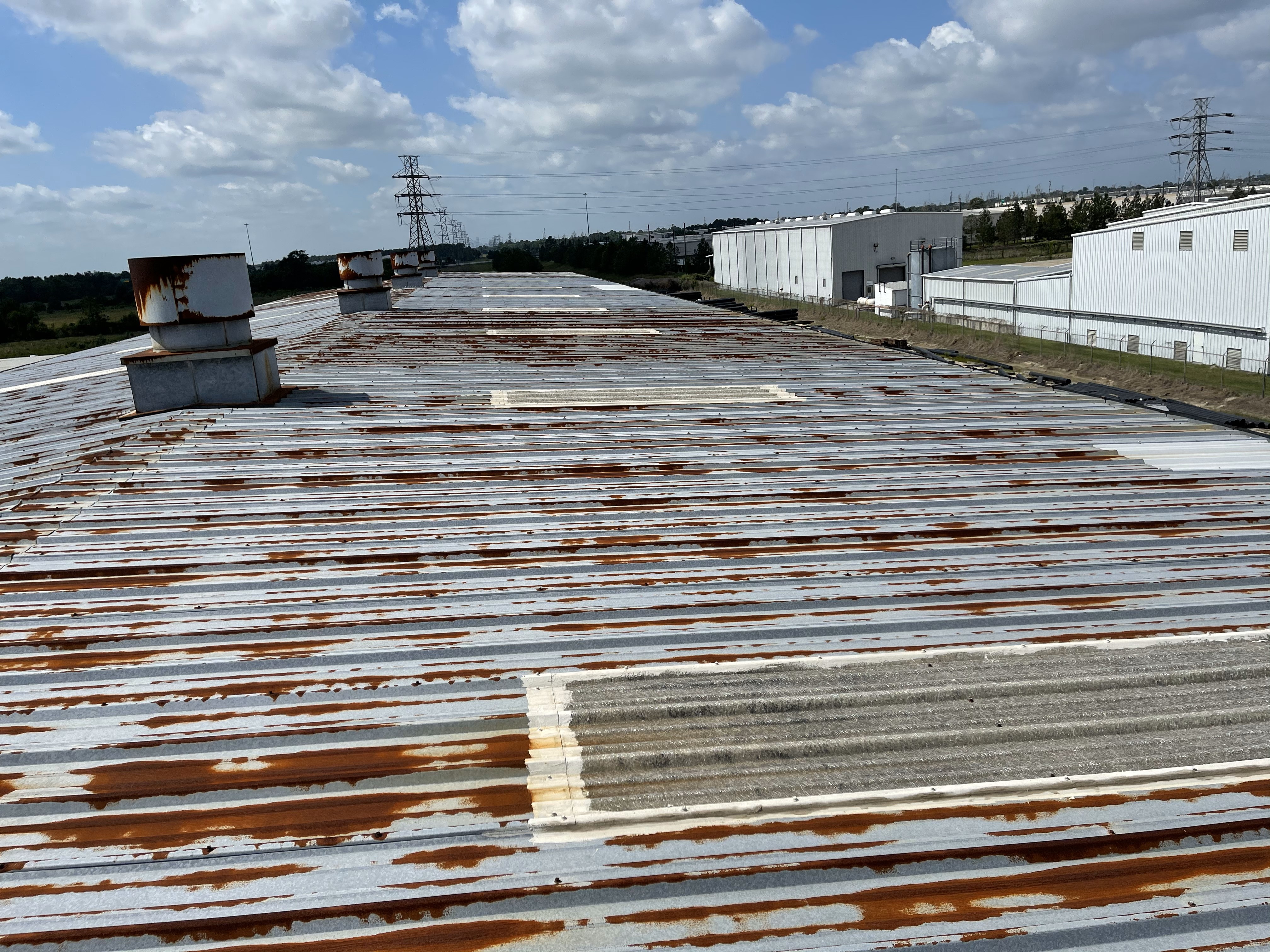When Your High Maintenance Roof Steals the Spotlight
Imagine this—you’re sitting in your office, coffee in hand, about to start a productive day, when you hear it. Drip… drip… drip… You glance up and see a water stain forming in the ceiling tile. Suddenly, your roof has become the center of attention—and not in a good way.
Sound familiar? If so, your roof might be a diva—demanding attention, a high-maintenance roof requires specialized care. And just like a diva, it won’t let you ignore it for long, before the signs your roof needs repair become a larger issue.
But how can you tell if your roof is throwing a tantrum? Let’s take a closer look at the signs that your roof is begging for attention and what you can do to restore peace.
Signs Your Roof is a “High Maintenance Roof”
1. Leaks: The Cry for Help
- Obvious Signs:
- Visible water stains on ceilings or walls.
- Active dripping water during or after rain.
- Less Obvious Signs:
- Musty odors lingering in offices or storage rooms.
- Mold or mildew growth, especially in corners and attic spaces.
- Peeling paint or bubbling wallpaper caused by hidden moisture.
Pro Tip: Don’t ignore the small leaks. They often signs your roof needs repair and can indicate bigger problems brewing above.
2. Age: When Time Catches Up

- How old is your roof? Most commercial roofing materials, like TPO, EPDM, and metal, have lifespans ranging from 15–40 years.
- Factors that speed up aging include:
- Intense heat and UV exposure in Houston, Texas.
- Frequent storms, hail, and wind damage.
- Poor maintenance routines or prior repairs done incorrectly.
If your roof is nearing the end of its lifespan, it’s time to start planning for commercial roof upgrade options like restoration or replacement.
3. Visual Inspection: Mirror, Mirror on the Roof
Our flat roof inspection services will help discover the warning signs like:
- Surface Damage:
- Cracked, curled, or missing shingles.
- Blistering or bubbling in membrane roofs like TPO and EPDM.
- Structural Issues:
- Sagging or buckling areas that suggest water saturation or weakened support beams.
- Pooling water, especially on flat roofs—this can lead to leaks and structural strain.
- Debris Buildup:
- Leaves, branches, or dirt can block drainage systems, leading to water overflow and damage.
4. Gutters and Downspouts: The Backup Singers
Your gutters and downspouts might seem like minor players, but they’re crucial for keeping your roof in check.
- Clogs and Overflow:
Blocked gutters can force water to back up under roofing materials, leading to rot and leaks. - Sagging or Detached Gutters:
This could indicate structural issues caused by water weight or corrosion.
5. Unusual Noises: The Diva’s Temper Tantrum
Ever hear screeching, cracking, or banging sounds during a storm? That noise could be signs your roof needs repair. Here are few things that noise could mean:
- Loose panels or flashing flapping in the wind.
- Expanding or contracting materials due to temperature changes.
- Structural issues shifting under pressure.
Reminder: If your roof starts making noise, it’s not being a high maintenance roof, it’s time to listen.
Why Ignoring Your “Diva” Roof is a Bad Idea
Water Damage: The Silent Threat
- Leaks don’t just cause stains—they can damage insulation, walls, ceilings, and even foundations.
- Moisture leads to mold and mildew, creating health hazards for employees and tenants.
- Electrical damage from water exposure increases fire risks.
Increased Energy Costs: Your Wallet Feels It Too
- Gaps and leaks let conditioned air escape, forcing HVAC systems to work harder.
- Poor insulation leads to temperature fluctuations, driving up energy bills.
Safety Hazards: No Room for Risk
- Weak roof structures can collapse under pressure, especially with pooling water or heavy debris buildup.
- Ice dams (in rare Houston cold snaps) can worsen cracks and leaks, adding to the damage.
Ignoring your roof’s cries for help today could mean costly repairs—or worse—down the road.
What to Do When Your Roof is Acting Out
Step 1: Book Your Commercial Roof Inspection Now!
Call in an expert roofing contractor—like us at Commercial Roof Repair Solutions—to assess the damage and provide an action plan.
Step 2: Regular Maintenance is Key
- Gutter Cleaning: Keep gutters and downspouts clear to ensure proper drainage.
- Trim Overhanging Branches: Prevent branches from falling and damaging the roof.
- Quick Repairs: Address small issues like cracked seals or missing fasteners before they escalate.
Step 3: Know When It’s Time for a Replacement
Sometimes a diva needs a total makeover. When repairs are no longer enough, consider:
- Silicone and Acrylic Roof Coatings: Cost-effective restoration options that extend the life of your roof.
- Energy-Efficient Materials: Reduce long-term costs with reflective coatings or cool roof systems.
- Durability Upgrades: Reinforce seams and flashing to handle Houston’s unpredictable weather.
Don’t Let Your Roof’s Diva Demands Go Unanswered. Book your commercial roof inspection today!
Your roof might be acting like a diva, but ignoring its demands can lead to costly damage and disruptions. By staying proactive—scheduling regular inspections, performing maintenance, and addressing issues early—you can keep your roof performing beautifully for years to come.
At Commercial Roof Repair Solutions, we specialize in taming even the most high-maintenance roofs. No matter what the roof damage repair needs a quick fix or a full restoration, we’ve got the expertise to get the job done right.
Call us for our flat roof inspection services at 281-928-4428 for a free inspection, and let’s bring your diva roof back into harmony.
5 Powerful Benfits of Metal Roof Restoration! #Roof Maintenance Checklist

